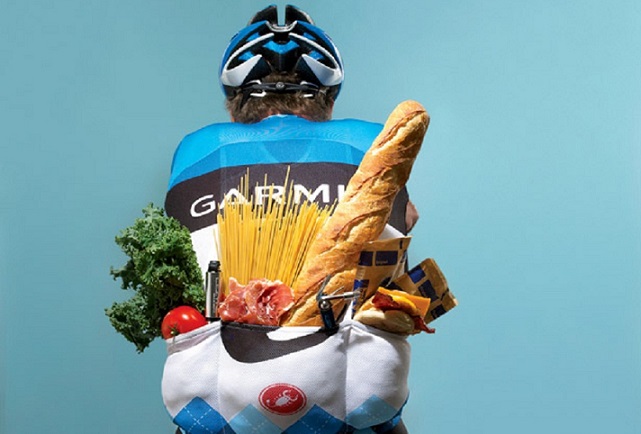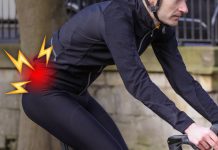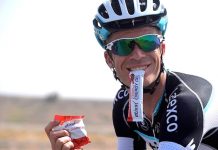Correct fueling – understanding the types of nutrients required, and the quantities in which they should be consumed – will improve performance, but can seem baffling to the layman.
If you find nutrition information dry, chewy and a real headache, it’s time to go back to basics. Get these things right and the rest is just the icing on the cake. From the importance of carbohydrate and protein to when and what to eat and drink before, during and after a ride, we have the answers.
Breakfast
Always eat before starting your morning training. Sleeping depletes the liver’s store of glycogen, which is the major store of carbohydrate for blood sugar regulation. When this is reduced, your blood sugar level drops and fatigue sets in, making concentration difficult – particularly disadvantageous if you’re using your training session to learn a new technique. Look for foods high in carbohydrate, low in protein and low in fat and, so you don’t compromise on your sleep, choose foods you can eat on the go such as a jam sandwich or sports bar.
Carbs are king
The importance of carbohydrate as a fuel source for the cyclist is almost universally recognised. We recommend a carb intake of between 60 and 70 per cent per meal.
Less well known, however, is the importance of carbohydrate as a source of fibre. “On a multi-day event, the digestive system is neglected because the blood is going to the working muscles,” says Chris Hole, cycling coach.
Potatoes, pasta, and rice are common sources of carbohydrate but Chris is a fan of buckwheat and quinoa, often served with avocado for protein.
Good fats, not bad fats
The type of fat you select is critical to health, performance and weight maintenance. Fats are grouped into ‘good’ fats and ‘bad’ fats. Good fats include polyunsaturated fats (Omega 3 and Omega 6 fats) and monounsaturated fats (Omega 9 fats). Whereas saturated fats found in meats and processed foods are to be limited, Omega 3 and 6 fats are vital to maintaining health and are found in nuts, seeds, fish and oils such as flaxseed, borage and starflower oil.
Additional benefits from these fats include a reduction of inflammation in the body, making them great for those with asthma and allergies while also providing a stimulatory benefit to the metabolism, and therefore assisting in weight loss. Good fats are known to reduce bad cholesterol (LDL) and are therefore an important part of the diet to assist in the prevention of heart disease. Aiming for around 20g of good fat per day is a great strategy for health support without the risk of adding too many calorific fats to the diet.
Four-hour window
After your ride, a four-hour window opens in which the body works at its hardest to replace glycogen stores depleted by your efforts in the saddle.
“Within the first two hours, the body is working at three-times the normal rate of replenishment. After those two hours, it drops to 50 per cent,” says Chris Hole.
How to make the most of this window? Chris Hole recommends consuming 200 calories per hour, equivalent to 50 grams of porridge every sixty minutes. Small meals are easier to digest, but the principle holds: two larger meals, of 400 calories each, will also provide adequate replenishment.
Your calorie source should come predominantly from carbohydrates. Chris Hole recommends one to 1.5 grams of carbohydrate, per kilo of body weight, each hour.
Protein
Protein improves your post-ride recovery – try a yoghurt after a short ride or a milkshake or carbohydrate-and-protein recovery drink after a longer effort. However, don’t overdo it – anyone eating a balanced diet and taking in enough calories is already likely to be consuming enough protein. (Cyclists need just 1.2-1.4g of protein per kilo of bodyweight per day.) There’s also evidence that too much protein can have an appetite-suppressing effect, which may prevent you eating enough carbohydrate to keep your glycogen levels topped up.
Salt water
When the body sweats, it not only loses fluid, but vital salts as well. While sodium is available in tablet form, Chris Hole is a fan of whole foods, which here means high quality salts like Himalayan rock salt, Celtic sea salt, Hawaiian deep sea salt, or salts from Utah’s Great Lakes.
“These will give you an unprocessed, natural salt. If you were to put it in water, it would remain suspended and dissolve. If a salt sits at the bottom and doesn’t dissolve, it’s a poor salt,” says Chris Hole.
Caffeine
Caffeine has consistently been shown to improve performance. The most likely mechanism by which it works is by stimulating the central nervous system into working a little harder. Caffeinated gels are readily available – use one during a ride to boost performance. Having around 2-3mg per kilo of body weight one hour before a race will also be beneficial.
Nuts and seeds
Nuts and seeds are good sources of essential fatty acids. As already mentioned, omega 3 and 6 are essential, but omega 9 fatty acids are also important. They help decrease inflammation and enhance recovery. Look to eat a handful of nuts – such as almonds, peanuts, pecans, pistachios, cashews and hazelnuts – and seeds – such as sesame and pumpkin – each day and you’ll recover quicker.














